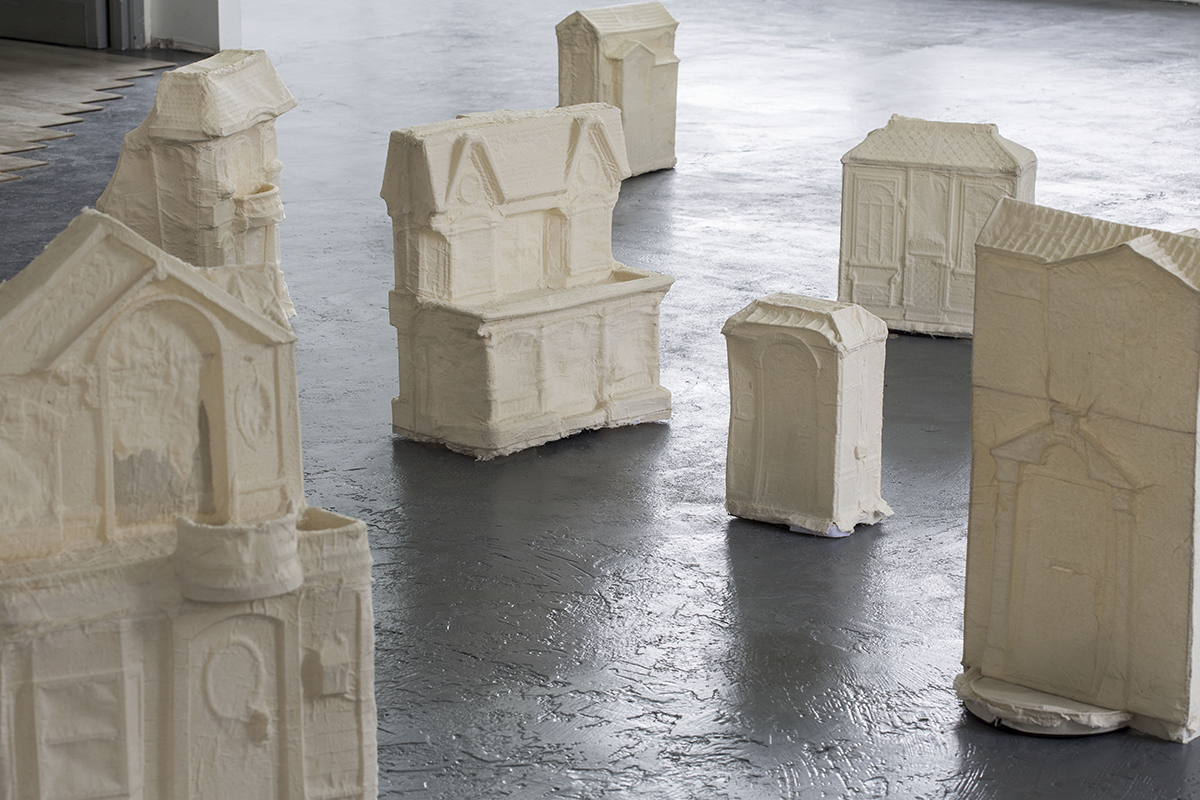Other Duties Just as Sacred
그만큼이나 신성한 의무
Gallery M, CICA Museum
September 11-16, 2018
H. It’s shocking. This is how you would neglect your most sacred duties.
N. What do you consider my most sacred duties?
H. Do I need to tell you that? Are they not your duties to your husband and your children?
N. I have other duties just as sacred
H. That you have not. What duties could those be?
N. Duties to myself.
Henrik Ibsen, A Doll’s House, 1879
As Richard Hamilton collaged the present and the future of the modern domestic life on Just What Is It That Makes Today’s Home So Different, So Appealing? 1956, the world we are living in still features the latest Hoover, boastful households, and plasticised bodies as the ideal future.
Despite the introduction of Roomba, the robotic cleaner, our housekeeping still requires human labours. Likewise, Barbie’s Dreamhouse still promotes gendered space, equipped with rooms mainly focus on domestic services, leaving no true space for Barbie. I found these inventions quite absurd, where there is a wide discrepancy in an ideal exterior and intolerant interior, an absurd gap between utopia and reality.
My works focus on the futility of the human aspiration of the dwelling by juxtapositioning objects that are parallelly absurd and staging distorted domesticity through sculptures. At the same time, the process of the artmaking to myself is a fulfilment of the childhood desire, the consolation of the memory, and transformation of the existing place to an outer world.
H. 오오, 이건 너무 해. 그럼 당신은 당신의 신성한 의무를 저버리겠다는 말이오?
N. 저의 신성한 의무라니 그게 무어예요?
H. 내가 말해야 알겠단 말이오? 당신 남편과 자식들에 대한 의무말이지.
N. 저는 그와 똑같은 다른 또 하나의 의무가 있어요.
H. 그런 건 없어——도대체 뭣인데?
N. 제 자신에 대한 의무예요.
헨리크 입센, 인형의 집, 1879
리처드 해밀턴이 오늘의 가정을 그토록 색다르고 멋지게 만드는 것은 무엇인가? (Just What Is It That Makes Today’s Home So Different, So Appealing?), 1956에서 콜라주로 비판했던 당시의 신세대와 별반 다를 것 없이, 오늘날의 우리는 여전히 우아한 형태의 가구들과 완벽하게 자동화된 신식 기계들을 이상적 미래로 그려내고 소비시키는 시대에 살고 있다.
21세기 시작과 함께 등장한 로봇 청소기 룸바 Roomba 를 통해 사람들은 꿈꾸던 미래가 눈앞에 펼쳐질 걸 기대했지만, 18년이 지난 지금 현실 속 가사의 모습은 사실 별반 차이가 없다. 생각처럼 ‘스마트’ 하지 못했던 로봇 청소기들은 빈번히 집을 나가거나 엉뚱한 곳에 걸려있기 일쑤라서 집안을 청소하기 위해선 여전히 사람의 노동이 필요하다.
같은 맥락으로 바비의 ‘드림 하우스’라는 인형집이 있다. 자동으로 오르락내리락 하는 엘리베이터와 거대한 발코니가 딸린 이 집은 많은 소녀들이 선망하는 미래의 공간이었으나, 펼쳐보면 그 내부 구성은 여전히 바비가 열심히 집안일을 해야만 성립이 되는 일반 형태의 가정집일 뿐이었다. 어른이 되어 다시 보게 된 바비의 드림 하우스는 남성 중심적이며, 바비를 위한 공간이 아니었음에 나는 실소를 흘릴 수밖에 없었다.
어느새 로봇청소기보다는 고양이 장난감으로 더 유명해진 룸바나, 바비를 위한 공간이 없는 바비의 드림하우스를 보다 보면 이 둘은 무척이나 닮아있다. 그렇기에 나는 이를 이용한 설치작업들을 통해 인간의 왜곡된 이상과 현실 사이의 차이 속에서 생겨나는 우스꽝스러운 모순들을 짚어내고 다뤄보려고 한다.
Sorin Choi 최소린
Seoul based artist studied painting BFA in Rhode Island of Design and sculpture MA in Royal College of Art. As a collector of vintage toys and dolls, the artist uses childhood objects to explores the relationship between object and subject. These objects are a simulacrum of human desires, and through that ideal forms, they bluntly project gendered stereotypes and absurdities.
1991년 서울에서 태어나 미국 로드아일랜드 미대에서 회화를 전공했으며, 영국 왕립 예술학교에서 조형을 공부하며 석사학위를 받았다. 다양한 장난감과 인형들을 모으는 콜렉터이기도 한 그녀는 이 유년시절의 물건들을 바탕으로 객체와 주체의 관계를 탐구하고 있다. 인간들의 이상적인 형태를 구현화된 이 물건들을 분석하며 그 장난감 아래에 깔려있는 인간의 욕구, 스테레오타입, 그리고 거기에서 나오는 모순들을 작품에 다뤄보려고 한다.
www.sorinchoi.com

